The butterfly pea plant, Clitoria ternatea, is a tropical, perennial, and climbing vine that blooms in the summer with flowers noted for producing natural dyes. Although they’re mostly grown for their vivid blue, purple, and white flowers, their plants also produce long flat pods containing six to ten peas, which are edible when harvested young.
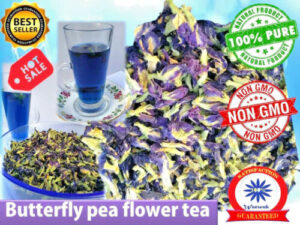
Vines grow to ten feet in length but have a twining habit that keeps plants to a tidy three feet tall. Leaves are medium green and broader at the base tapering to a point. Native to Indonesia, this is a short-lived perennial that grows in USDA zones 9 to 11. It is cultivated as an annual in northern zones or grown in pots and overwintered indoors as a biennial.
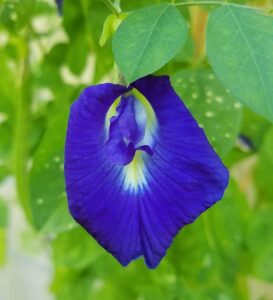
The blue flowers are edible and are a natural food coloring in Asian cuisine. They are added to beverages and are a popular ingredient in “Butterfly Pea Tea.”1 Butterfly pea plant is widely grown as an ornamental and reclamation plant that fixes nitrogen in soil.
| Common Name | Butterfly Pea Plant, Asian Pigeon Wings, Blue Pea |
| Botanical Name | Clitoria ternatea |
| Family | Fabiaceae |
| Plant Type | Tropical herbacious perennial |
| Size | Vines to 10 feet, plants to 3 feet tall |
| Sun Exposure | Full sun |
| Soil Type | Moist, well drained |
| Soil pH | 6.0 to 8.0 |
| Bloom Time | Summer |
| Hardiness Zones | 9, 10, 11 USA |
| Native Area | Indonesia |
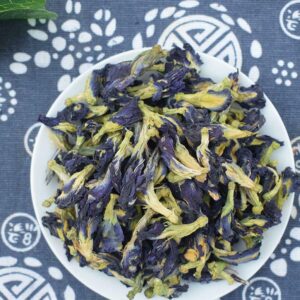
How to Plant Butterfly Pea
The butterfly pea is a hardy plant that requires warm growing conditions with plenty of sun. Easily grown from seed, both plants, and seeds are offered by specialty growers.
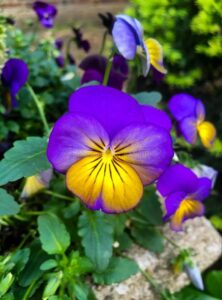
When to Plant
Start seeds indoors 8 to 10 weeks before the final frost in your growing zone, or directly sow the seed in the garden in early spring in zones 9 and higher. Purchased plants and seedlings can be planted in the garden when average air and soil temperatures reach 60 degrees F.
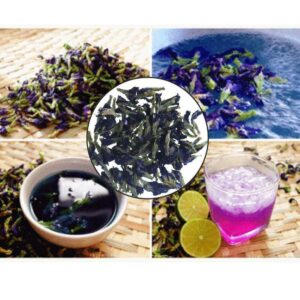
Selecting a Planting Site
Choose a location that receives 6 to 10 hours of bright direct sunlight daily. Making sure the soil is well-draining is essential.
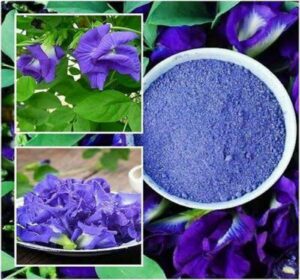
Spacing, Depth, and Support
Direct sow seeds about 1 inch deep and 3 to 4 inches apart. Plant seedlings 6 to 10 inches apart and at the same level as in their original pot. To grow butterfly pea plants in pots, choose a container 6 inches deep and 12 to 14 inches in diameter. Sow seeds 1 inch deep and 2 inches apart. Thin to one or two per container once they reach 6 inches tall. Provide a support structure such as a trellis or grow them on a fence or wall.
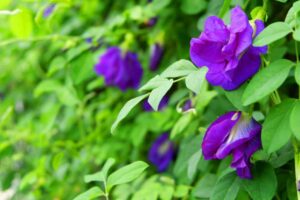
Butterfly Pea Plant Care
Light
Butterfly pea plants need lots of bright, direct sunlight for 6 to 10 hours daily. Avoid locations where the overhead canopy or neighboring plants cast shade.
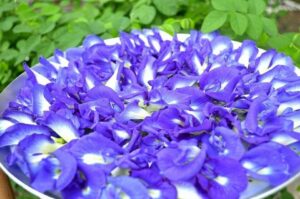
Soil
Tolerant of soil type, this twining vine grows best in fertile, slightly sandy, and well-draining soils. Plants require a balanced pH of 6.0 to 8.0.
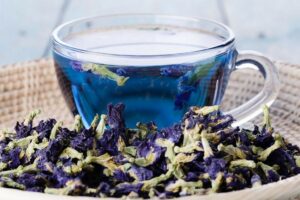
Water
Butterfly pea seedlings benefit from 1 inch of water per week. Once established, they are drought tolerant and need supplemental irrigation only in prevailing hot, dry conditions. Soil level irrigation is best for avoiding fungal infections like powdery mildew that can develop on wet leaves.
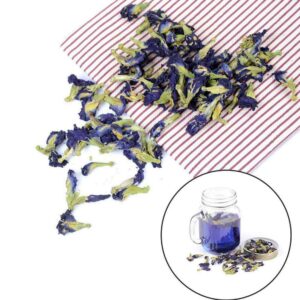
Temperature and Humidity
This is a tropical plant that prefers moist air and temperatures between 70 and 100 degrees F. Hardy only in U.S. zones 9 through 11, the butterfly pea plant does not survive frost and is grown as an annual or potted plant where average temperatures fall below 60 degrees F. Indoor plants benefit from frequent misting to raise the humidity level.
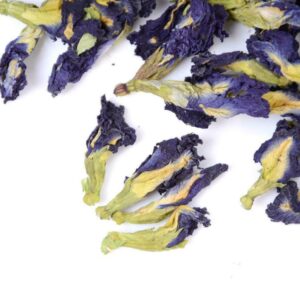
Fertilizer
Add well-aged manure, compost, or balanced NPK fertilizer at when planting. NPK liquid fertilizer higher in phosphorous and potassium boosts bloom for perennial plants when applied twice annually after pruning.
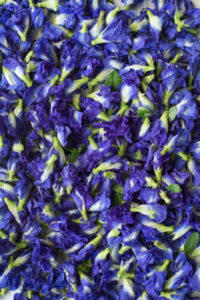
Pollination
Butterfly pea plants are perfect which means they have both male and female parts and are considered self-pollinating. The flower, however, requires assistance from bees to complete pollination and fertilization for the plant to produce peas. Potted plants grown indoors year-round will not produce fruit unless hand pollinated.
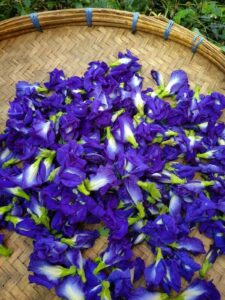
Variety vs. Variety
Clitoria mariana, also called Butterfly Pea, is an uncommon wildflower found in the southern U.S. which tends to sprawl along the ground. The flower color is violet-blue to lavender with purple centers rather than yellow as in Clitoria ternatea. All parts of both plants are edible however Clitoria mariana is considered a forage plant and not widely consumed.
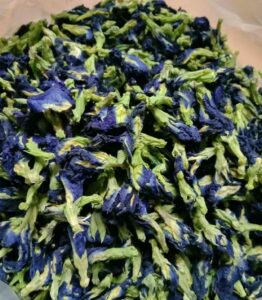
Harvesting Butterfly Pea
Butterfly pea plants are grown for their flowers rather than the edible peas. The flowers open for only a day or two but can be harvested fresh, wilted, or dried. The greatest amount of pigment is extracted from fresh flowers, resulting in richer color in food and beverages. Slightly wilted flowers should be left to dry completely and dried flowers produce the best color when combined with hot water.2
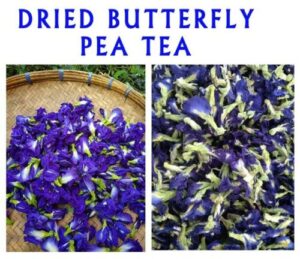
To harvest peas, remove flowers to activate the growth of the pod. Harvest pods before peas are too large which causes them to become tough and flavorless. To harvest seeds, wait until pods dry and turn brown.

How to Grow Butterfly Pea in Pots
Pea plants tend to grow easily in containers as long as the soil drains well and support is included. Seeds can be started in flats in early spring and transplanted or sown directly into individual pots at least 6 inches deep and 12 inches in diameter. Butterfly pea plants are heat and drought-tolerant so keeping pots outdoors in summer and overwintering indoors is a viable option. Plants grow in clay, ceramic, and plastic pots.
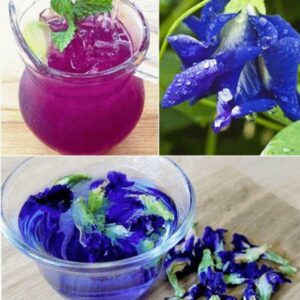
- Fill the container with potting soil. Butterfly pea plants are not picky about soil type but adding compost to make up 1/4 of the mix provides nutrition for young plants.
- Starting with your own or a purchased seedling, plant it in the center of the pot at the same level as in the original container.
- Fill in around the roots and add a trellis or stake.
- Water thoroughly until water drains from the pot bottom.
- Place in a location that receives at least 6 hours of bright sunlight daily.
- Move the plant outdoors into the full sun when temperatures average 65 degrees F. daily.
- Once the plant is established and growing, allow the soil surface to dry before watering.
- When average daily temperatures drop below 60 degrees F. move the plant indoors to a sunny window.
- Prune regularly and often by cutting back the tips of vines. Pruning can be done any time of year to avoid a thin, leggy appearance.
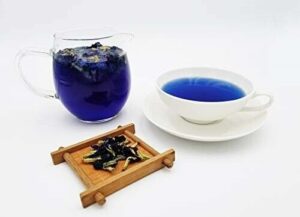
Pruning
Pruning is needed to keep plants compact and bushy. Prune your butterfly pea plant often by removing growing tips. Deadheading flowers increases flower production. If you want to save seeds for propagation or harvest edible peas for cooking, leave flowers on the vine. Harvest edible peas while still small or remove pods when they become brown and dry.
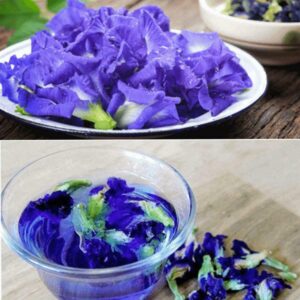
Propagating Butterfly Pea
Butterfly pea plant grows easily from cuttings taken from mature plants. Gather a snipper, a pot at least 6 inches deep and 12 inches wide, and potting soil.
- Take the cutting from an older, woodier portion of the vine. Pruned growing tips do not root well. Choose a section 3 to 5 inches long with a bud at the top.
- Remove lower leaves and place the cutting in a glass of water or dip the bottom in rooting hormone and plant in potting soil.
- Placed in water or soil, cutting produces roots in two to three weeks, followed quickly by flowers that open as early as three weeks once the plant is established.
- Keep soil moist and place potted seedlings in a warm, moist location. The morning sun is best with some afternoon shade to allow young plants to acclimate.
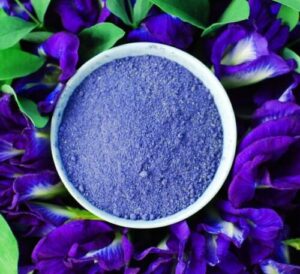
How to Grow Butterfly Pea From Seed
If you are growing butterfly pea plants in pots, allowing seed production is a good way to keep this plant going. Seeds can also be purchased at some greenhouses, online, and from specialty growers. To propagate from seed, you need a sharp knife, flats, or containers 6 inches deep and 12 inches wide, and potting medium.
- Butterfly pea seeds are not reliable germinators. Choose mature, aged seeds that are hard, and dark brown.
- To check for viability, pour seeds into a bowl of water. Discard seeds that don’t float.
- Use the sharp knife to nick each seed to allow for better water absorption.
- Soak seeds in water for 24 hours.
- Fill the flat or pot with a light potting mix made up of 25 percent compost.
- Plant seeds 1 inch deep. In pots, space them 4 to 6 inches apart. Seeds sown in flats can be thinned or transplanted into pots or the garden once seedlings have three sets of leaves. Do not plant outdoors until average daily temperatures reach 60 degrees F.
- Keep seedlings moist. Germination is most successful in temperatures above 80 degrees F.
- Germination occurs from six days up to three weeks. Nicking and soaking seeds improve the time to germination.
- Vines grow rapidly, however average time for plants to flower is 90 days.
Potting and Repotting Butterfly Pea
Repotting annually is recommended to replenish soil nutrients. Plants are also potted up into containers 2 to 3 inches larger once they’ve doubled in size. Turn the plant’s pot on its side, grasp the base of the plant, and gently work it loose from the pot. Add fresh potting material, choosing a larger pot when necessary. Replant and water.
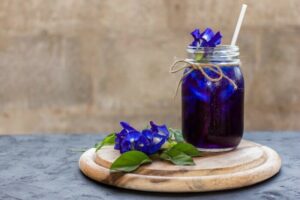
Overwintering
Gardeners north of zone 9, need to bring potted plants indoors when average daily temperatures drop below 60 degrees F. Place the pot in a location that receives at least 6 hours of direct sunlight daily. Close to a south-facing window works well. Indoor temperatures need to stay consistently above 60 degrees F., so avoid drafty spots. Add a humidifier or mist the plant frequently to mimic moist, tropical conditions. Allow the soil surface to dry between waterings and continue to prune as needed.
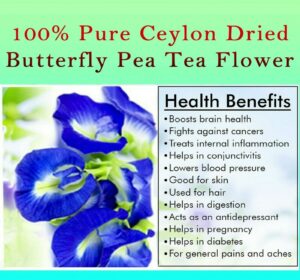
Common Pests and Plant Diseases
Butterfly pea is not vulnerable to many diseases or pests. Spider mites and aphids can be a problem but can be knocked down with a strong spray of water. Treat infestations with horticultural oil. Overwatering can lead to bacterial soft rot, mold, and mildew.
-
Is butterfly pea poisonous?
Butterfly pea plant Clitoria ternatea is not toxic. All parts of the plant are edible and potable.
-
What is butterfly pea good for?
The butterfly pea plant is often grown as an ornamental for its vibrant blue flowers. Flowers are used as natural food coloring, dye for natural fibers, and as an ingredient in beverages including hot and cold tea. The plant fixes nitrogen in the soil and peas are edible when harvested young.
-
Is butterfly pea plant edible?

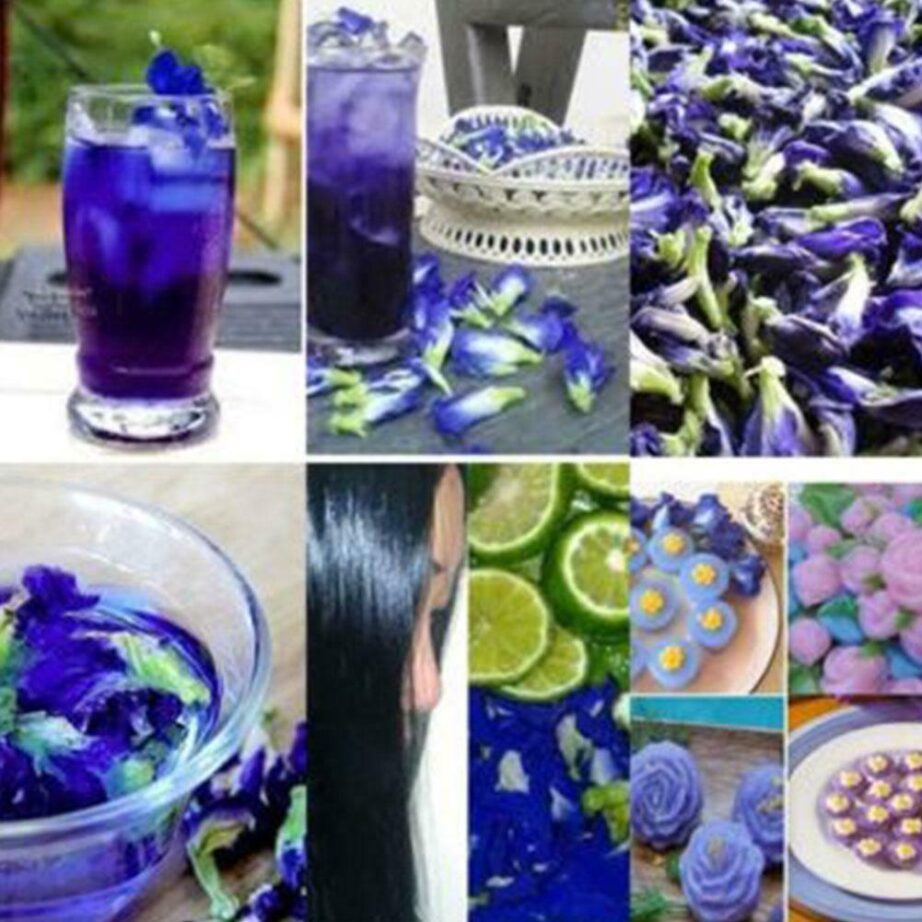

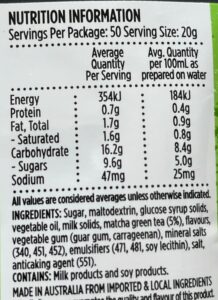
 Any questions or if buying, contact me
Any questions or if buying, contact me
Recent Comments